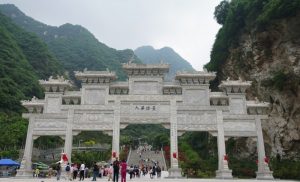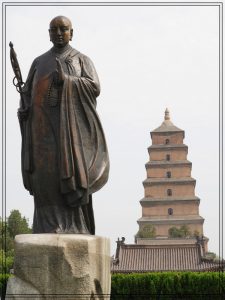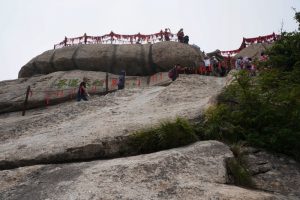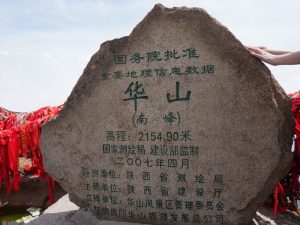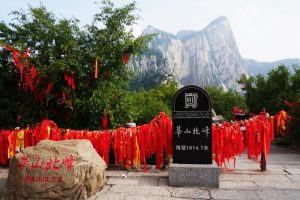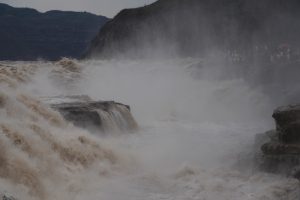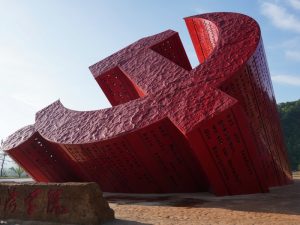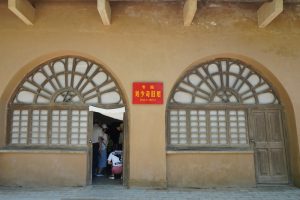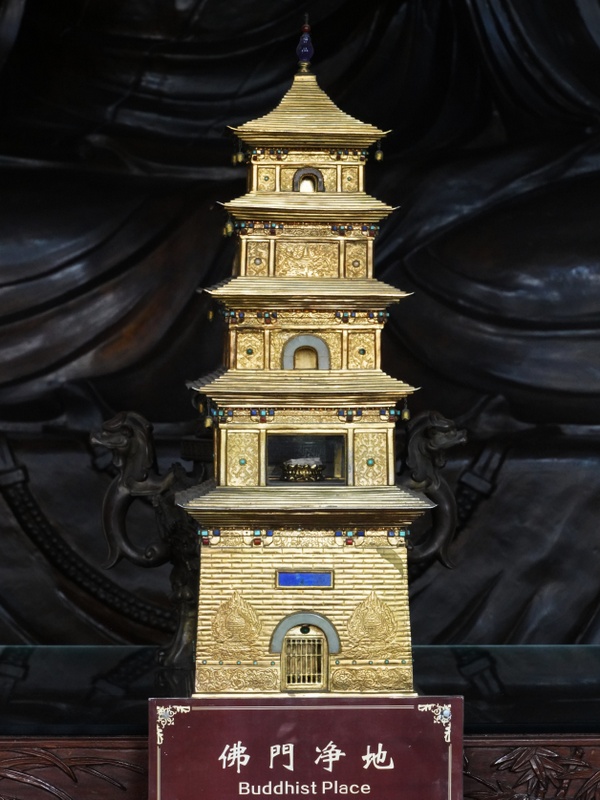Xi’an, Huashan & Yan’an June 5 – 10, 2019
Trip Plan
After a wonderful trip to Mogao and Yulin Caves last October, I know I would return to Dunhuang for the third time. It is just a matter of time. In early May, I accidentally came across news of a course organised by Mogao Classroom from June 11 to 16, I signed up. I also decided to revisit Xi’an before proceeding to Dunhuang. Things worked out well and I had a trip far exceeded my expectations.
June 5 Wednesday: Hong Kong – Xian
I had a smooth flight that left Hong Kong after 2:30 pm and arrived in Xi’an around 6 pm. The airport looks modern and user-friendly. I took an airport bus (RMB25) to the railway station where Grand Soluxe Hotel is located. It was around 8 pm when I checked in and settled down.
Xi’an 西安, the capital of Shaanxi Province, is one of the oldest cities and the capital of 13 dynasties with a total of 73 emperors starting with Qin (221-206 BC) and ending with Tang (705-904).
Surrounded by some of the best-preserved ancient city walls in China, Xi’an is rich in history and culture with countless historical ruins, museums and cultural relics. It boasts six World Heritage Sites namely the Mausoleum of the First Qin Emperor (world famous for its terracotta warriors) and six sites related to the Silk Roads: the Routes Network of Chang’an – Tianshan Corridor namely Weiyang Palace of Han Dynasty, Daming Palace of Tang Dynasty, Big Wild Goose Pagoda, Small Wild Goose Pagoda and Xingjiao Temple (which preserved the relics of Xuanzang).
Today, the Xi’an – Xianyang metropolitan area is the most populous city in Northwest China with a population of over 13 million. This area has always been a popular tourist destination.
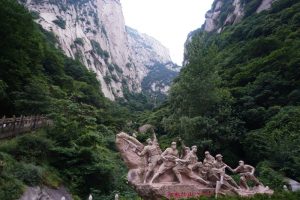 I like Xi’an and have already visited it three times. The first visit was part of my Silk Road trip with a dozen of friends in early 1990s. I returned a few years later with Bing and Ellen and climbed Mount Huashan 華山. The third trip was a short official study trip in the late 1990s. This time, I had no firm plan but hoped to revisit Huashan and some of the World Heritage Sites in Xian.
I like Xi’an and have already visited it three times. The first visit was part of my Silk Road trip with a dozen of friends in early 1990s. I returned a few years later with Bing and Ellen and climbed Mount Huashan 華山. The third trip was a short official study trip in the late 1990s. This time, I had no firm plan but hoped to revisit Huashan and some of the World Heritage Sites in Xian.
The city has grown a lot since my last visit. Xi’an with its old city wall looks majestic, historical, leafy and relaxing. The hotels I stayed during the first two visits were basic. Now the city has many luxurious hotels. One can travel with ease using with the metro and electric buses.
I stayed at Grand Soluxe Hotel near the railway station. An airport shuttle bus (RMB25) takes about an hour to the railway station. My hotel is also close to the bus terminal. While on the shuttle bus, I got a leaflet from a tour company call ‘Gtimely’ offering trips to the Terracotta Army, Huashan and Yan’an. Though my original plan was to go to Huashan on my own (that’s the reason I stayed near the railway station and the bus terminal), I changed my mind and signed up for the Huashan and Yan’an trips run by Gtimely.
June 6 Thursday: Day Trip to Huashan
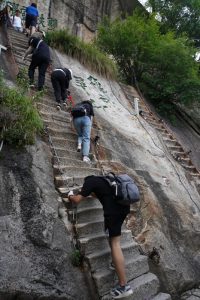 Huashan located 120 km east of Xi’an is the western mountain of the Five Great Mountains of China with a long history of religious significance. It has five main peaks:
Huashan located 120 km east of Xi’an is the western mountain of the Five Great Mountains of China with a long history of religious significance. It has five main peaks:
East Peak with three summits: Zhaoyang Feng 朝陽峰 (the highest summit at 2,096m), Shilou Feng 石樓峰 and Botai Feng 博臺峰
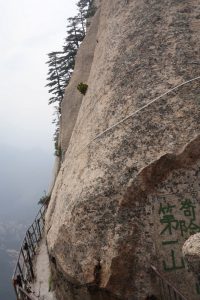 South Peak with three summits: Luoyan Feng 落雁峰 (the highest in Mount Hua at 2,154m), Songgui Feng 松檜峰 and Xiaozi Feng孝子峰,
South Peak with three summits: Luoyan Feng 落雁峰 (the highest in Mount Hua at 2,154m), Songgui Feng 松檜峰 and Xiaozi Feng孝子峰,
Central Peak with one summit: Yunu Feng 玉女峰 (Jade Maiden at 2,042m)
West Peak with one summit: Lianhua Feng 蓮花峰 at 2,082m
North Peak with one summit: Yuntai Feng 雲臺峰 at 1,615m
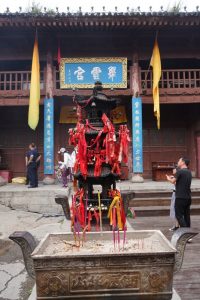 Huashan has historically been an important place for immortality seekers as many herbal medicines are grown and powerful drugs were reputed to be found here. It has been a place of retreat for hardy hermits.
Huashan has historically been an important place for immortality seekers as many herbal medicines are grown and powerful drugs were reputed to be found here. It has been a place of retreat for hardy hermits.
As early as the 2nd century BC, a Daoist temple was built at the base of the West Peak. Daoists believed that in the mountain lives the god of the underworld and the temple was often used for spirit mediums to contact the god and his underlings. In the 1230s, all the temples on the mountain came under the control of the Daoist Quanzhen School and the China Daoist Association since 1988.
There are three hiking routes leading to the North Peak. From this peak, a series of paths (a climb more than 300m on top of a mountain ridge) rise up to the Canglong Ling. This was the only trail to go to the four other peaks until a new path was built to the east around the ridge in 1998.
In 1996, a 1,550m-long cable car line to the North Peak with an elevation of 800m was opened. The second 4,211m-long (with an elevation of 894m) line to the West Peak which took 21 years to plan and built, was open in 2013.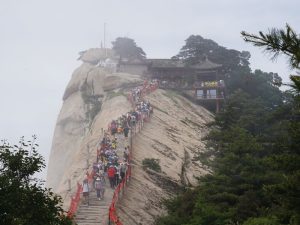
The route up the mountain has been named as one of the most dangerous hikes in the world. The narrow pathways with precipitous drops and plank walk can be scary. As a result of growing number of local tourists, deeper pathways, stone steps, wider paths and new tracks have been made since my last visit in early 1990s. One-way routes on some of the more dangerous parts have also been made.
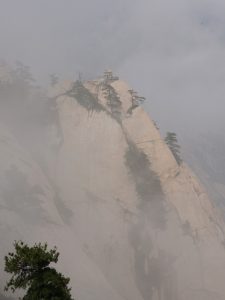 Taking local tours can sometimes be frustrating. I had to wait for a transfer bus near my hotel at 7:15. But a family of five was missing and we had to wait 15 minutes. The father did not apologise to the group for being late. Instead, he said “What can I do when my son does not want to get up?”. I found his attitude dismissive and his answer irresponsible. As a parent, if you know your young boy cannot get up around 6:30am, you should not have joined this trip. You can make your own way by public bus or train or hire a car.
Taking local tours can sometimes be frustrating. I had to wait for a transfer bus near my hotel at 7:15. But a family of five was missing and we had to wait 15 minutes. The father did not apologise to the group for being late. Instead, he said “What can I do when my son does not want to get up?”. I found his attitude dismissive and his answer irresponsible. As a parent, if you know your young boy cannot get up around 6:30am, you should not have joined this trip. You can make your own way by public bus or train or hire a car.
We were taken to the parking lot where all the tour buses of the company were parked. I boarded the bus to Huashan. But it did not set off till 8:30am. I did not arrive at the Huashan Park entrance till 12:30 pm. First, the driver stopped for a 20-minute rest after driving two hours. Then we stopped for lunch. Though I did not join the group lunch, I had to wait.
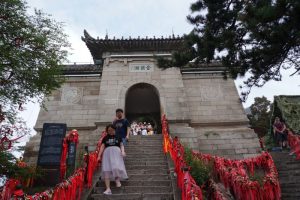 Nowadays, travel in China is not too cheap. I paid RMB100 for the bus ride. The entrance fee is RMB160. When the tour leader noted that I would be 65 soon, he believed I might not need to pay. He was right: I saved plenty of money on entrance fee on this trip.
Nowadays, travel in China is not too cheap. I paid RMB100 for the bus ride. The entrance fee is RMB160. When the tour leader noted that I would be 65 soon, he believed I might not need to pay. He was right: I saved plenty of money on entrance fee on this trip.
The cheapest way to explore the park is on foot. I hiked with Bing and Ellen in early 1990s as there was no cable car. This time, I took the cable car to the West Peak (RMB140) and descended from the North Peak (RMB80). Apart from the cable car, I had to pay RMB60 for two shuttle bus rides.
I had a nice scenic ride to the West Peak cable car station which takes over half an hour. I climbed a steep flight of staircases to reach the station which was built with the assistance of a French company.
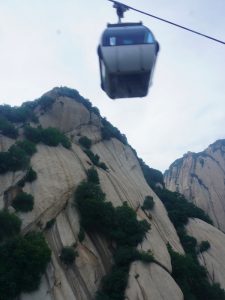 Though it was not a public holiday, I still had to queue for some 15 minutes for the 20-minute ride. The 4.2km-long cable car line built over difficult terrain is a great engineering achievement. I had breath-taking views of spectacular granite cliffs, ridges, peaks and gorges near and far. I even saw a cave half way up a vertical granite cliff. How was it built and how could someone get there?
Though it was not a public holiday, I still had to queue for some 15 minutes for the 20-minute ride. The 4.2km-long cable car line built over difficult terrain is a great engineering achievement. I had breath-taking views of spectacular granite cliffs, ridges, peaks and gorges near and far. I even saw a cave half way up a vertical granite cliff. How was it built and how could someone get there?
The cable car line was well designed and built as visibly unobstructed as possible. By the time I finally stepped off the cable car, it was already around 1:30pm.
I began my hike to the West Peak which is relatively easy. The path cut into the stone is narrow. It was a sunny day and the stone steps were not slippery. Otherwise, it can be dangerous.
I noticed a few iconic pine trees I saw last time had died. After summiting the West Peak, I took the same route down before following another trail to the Luoyan Feng, the highest peak in Huashan. The peak was packed with noisy Mainland tourists juggling for a good position to take a photo.
Now I began a long steady hike downhill which is more stressful for the knees and legs. The path leading to the South Sky Gate is a fairly flat and shady. When I was approaching the gate, I had full view of the East and Central Peaks. I recalled I had stayed in the guesthouse leading to the East Peak.
It was after 3 pm now. Our guide had advised us to descend no later than 3:30 pm. As it would take 90 minutes to reach the North Peak, I would never be able to reach all the peaks and reach the car park by 6 pm.
The signage is good and I had a leisure stroll to the North Peak. Nonetheless, the descent is strenuous as the stony path is narrow and steep. I had to focus on the steps with my hand on the iron railing. I would look around or take a photo when I found a safe place to stand still.
My legs were tired and started to hurt. I persisted and reached the North Peak without problem. I was rewarded with a postcard view of Huashan except that there was no mist nor cloud. Looking at the steep staircases now, I wonder whether I can ever reach the five peaks at my age on foot without taking the cable car.
I had an uneventful ride to Xi’an. By the time I got off the bus, I was limping along. Oh God, I have walked for less than five hours. Anyway, I have to live within my limitations!
2-day Trip to Yan’an
June 7 Friday (Dragon Boat Festival): Hukou Waterfalls
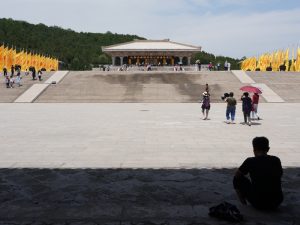 I checked out before taking a shuttle bus at 7:15 am to the meeting point. Once again, the bus did not leave till 8:30 am. There were 32 tourists from 11 groups on this 2-day trip. I was the only lone traveller: the rest came with families and friends.
I checked out before taking a shuttle bus at 7:15 am to the meeting point. Once again, the bus did not leave till 8:30 am. There were 32 tourists from 11 groups on this 2-day trip. I was the only lone traveller: the rest came with families and friends.
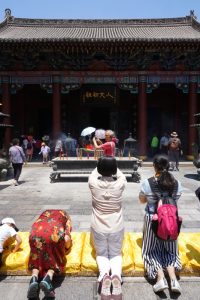 We had a long drive covering some 1,000km in two days. Again, the trip was not cheap: I paid a total of RMB768 (280 for transportation and accommodation, 60 as single supplement, 100 for two lunches and a breakfast, 40 for a shuttle bus to Hukuo Waterfalls and 288 for a musical performance “Yan’an Revolutionary Show”). As an elderly person, I did not need to pay two entrance fees mounting to about RMB100.
We had a long drive covering some 1,000km in two days. Again, the trip was not cheap: I paid a total of RMB768 (280 for transportation and accommodation, 60 as single supplement, 100 for two lunches and a breakfast, 40 for a shuttle bus to Hukuo Waterfalls and 288 for a musical performance “Yan’an Revolutionary Show”). As an elderly person, I did not need to pay two entrance fees mounting to about RMB100.
After driving for almost three hours through the Loess Plateau which now looks green with cash crops, we stopped for lunch before visiting the Mausoleum Park of Huang Di (Yellow Emperor).
It is said that China’s first emperor and our ancestor lived here. It is new with a theme-park appearance. It does not appeal to me at all.
The second attraction is the Hukou Waterfalls. The Yellow River bed here suddenly shrinks from some 300m to around 50m forming a narrow gorge with an abrupt drop of some 30m. The river then flows through a water-channel of some five kilometres to the lower reaches.
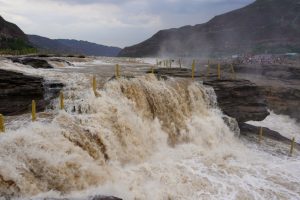 All tourists are required to take a shuttle bus from the park entrance. By the time we reached the waterfalls, it was about 4:30pm. We had 70 minutes free time.
All tourists are required to take a shuttle bus from the park entrance. By the time we reached the waterfalls, it was about 4:30pm. We had 70 minutes free time.
Soon it started to rain heavily. As I had left my umbrella in the coach, I took refuge in a rock cave for some 20 minutes. Quite an experience!
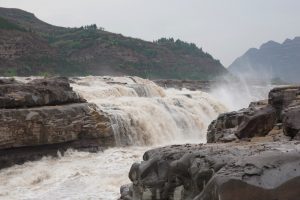 I came here some 20 years ago. But I was on the Shanxi Province side of the Yellow River. The scenery looked totally different as it was dry last time.
I came here some 20 years ago. But I was on the Shanxi Province side of the Yellow River. The scenery looked totally different as it was dry last time.
This time, yellow water gushed through the narrow gorge making thundering noises and enormous water sprays. The views are more spectacular. But there were too many noisy tourists.
We left around 6 pm and arrived in a hotel along the road to Yan’an 30 minutes later. I had a single room which is clean with a comfortable hard bed. There was nothing to do and we all went to bed after dinner.
Normally, the area is arid. But the weather is changing. We had heavy rain in the afternoon and torrential rain and thunders at night. I saw lightning and heard thunders too.
June 8 Saturday: Yan’an
Yan’an 延安 (about 350km north of Xian) along with Jinggangshan are two pilgrimage sites for those interested in the Chinese communist history. Yan’an celebrated as the birthplace and cradle of the revolution, was the end point of the Long March (October 1934 – October 1935) and the centre of the revolution from late 1935 to early 1947. From 1937, it became the seat of the communist government of the Shaanxi-Gansu-Ninqxia Border Region and centre for intensive training of Chinese Communist Party (CCP) members and army troops.
After a simple breakfast, we set off at 5:20 am. Most passengers slept but I enjoyed the scenery with lush green countryside in mist.
We had a photo stop at Nanniwan. Communist followers and supporters arrived with the Red Army with the determination to turn the barren land of the Loess Plateau into farm land producing food to support the community.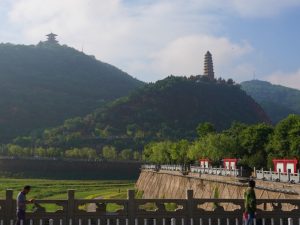
Then we drove on and arrived in Yan’an around 8am. Yan’an has as many as 140 revolutionary sites. We sped through the city centre and had only two stops in the morning.
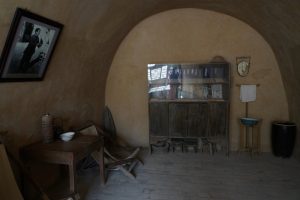 First, we spent an hour in Yangjialing Village 楊家岭 a historic site occupying an area of 6.7 hectares, was the headquarters of the CCP from 1930s to 1940s. It symbolises the spirit of liberation during hard times: there is a plot of land Chairman Mao Zedong grew vegetables.
First, we spent an hour in Yangjialing Village 楊家岭 a historic site occupying an area of 6.7 hectares, was the headquarters of the CCP from 1930s to 1940s. It symbolises the spirit of liberation during hard times: there is a plot of land Chairman Mao Zedong grew vegetables.
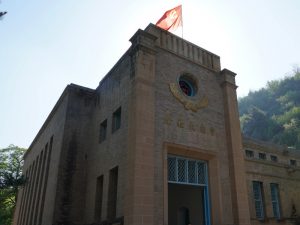 We were early and not too many local tourists had arrived yet. We first visited the residences built by digging earth out from the hillside. ao Zedong (1893-1976) and Zhou Enlai (1898-1976) had lived here and we visited their residences.
We were early and not too many local tourists had arrived yet. We first visited the residences built by digging earth out from the hillside. ao Zedong (1893-1976) and Zhou Enlai (1898-1976) had lived here and we visited their residences.
There are office buildings and halls. From here, the communist leaders commanded the war against Japan and launched the Rectification Movement and the Large – scale Production Campaign. The Great Auditorium, a historical building built in 1942, was the venue of the 7th National Congress of CCP in April 1945.
We then drove to Zaoyuan 枣園 (Date Garden) where the CCP Secretariat from October 1943 to March 1947 was located. I saw an exhibition on this revolutionary period in the Yan’an Revolutionary Memorial Hall.
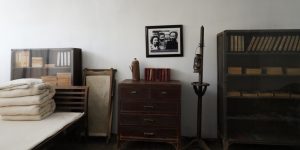 There are 25 cave dwellings where leaders live and worked for over ten years. There were herds of local tourists and it was difficult to go into the former residence of Mao Zedong, Zhou Enlai, Zhu De (1886-1976) and Liu Shaoqi (1898-1976).
There are 25 cave dwellings where leaders live and worked for over ten years. There were herds of local tourists and it was difficult to go into the former residence of Mao Zedong, Zhou Enlai, Zhu De (1886-1976) and Liu Shaoqi (1898-1976).
At 11am, our guide arranged us to see China’s first ‘RED’-themed show (‘red’ means revolutionary in this context). It is one of the standard performance showing enthusiastic young men and ladies coming to Yan’an to join the revolution. The show is a melange with music, Hollywood type of stage setting, acrobatic acts, sound and lights. But I found the sound unbearably loud. I would avoid such shows in future.
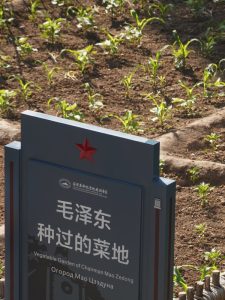 After the show, we had a quick lunch. Before 1 pm, we were on our way back to Xian. We arrived in Xian around 6:30pm. The traffic was bad and I was not dropped off near my hotel till 7:30pm. I took a cheaper room (RMB288) in the same hotel. Though not as luxurious and spacious, the room is comfortable and equally clean.
After the show, we had a quick lunch. Before 1 pm, we were on our way back to Xian. We arrived in Xian around 6:30pm. The traffic was bad and I was not dropped off near my hotel till 7:30pm. I took a cheaper room (RMB288) in the same hotel. Though not as luxurious and spacious, the room is comfortable and equally clean.
My knees and legs were still hurting. As I had not eaten well on the trip, I went to the hotel restaurant for dinner. I ordered a noodle, a stew chicken hot pot and a beer. The delicious noodles were substantial and only cost RMB12. The beer was cold and nice. I waited for over half an hour for the chicken which never arrived: the staff had not placed the order. Well, it was just as well as I was full after having the noodles and a large bottle of beer.
June 9 Saturday: Xian
I had enough organised tours. It’ time for the temples. Buddhism spread to China in Western Han Dynasty (about 1900 years ago). Today, X’ian still has some 100 temples. Of the eight main Buddhist schools, six schools have their principle temple in Xi’an. I looked up Baidu and found a list of ten most famous temples in the city.
Today I felt lazy and was in slow motion. I still had pains when walking downstairs. As a result, I only visited three temples.
Big Wild Goose Pagoda 大雁塔, a World Heritage Site.
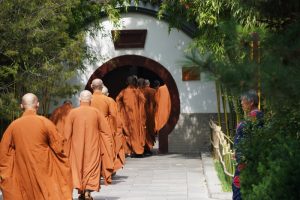
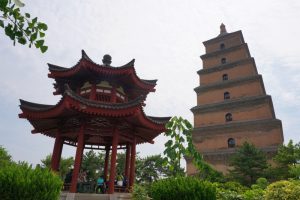 The pagoda built in 652 originally with five stories, is located inside the Daci’en Temple complex 大慈恩寺 built in 648 to honour Empress Zhangsun. One of the main functions of the pagoda was to hold sutras and figurines of the Buddha that were brought from India by Xuanzang (602-664) after his 17 years of travel from 629 to 645 in the present day Xingjiang and Gansu, China, India, Nepal, Afghanistan. Rebuilt in 704, Empress Wu Zetian added three more stories. A massive earthquake in 1556 caused severe damage and reduced the pagoda to seven stories. It was extensively repaired during the Ming Dynasty (1368-1644) and again in 1964.
The pagoda built in 652 originally with five stories, is located inside the Daci’en Temple complex 大慈恩寺 built in 648 to honour Empress Zhangsun. One of the main functions of the pagoda was to hold sutras and figurines of the Buddha that were brought from India by Xuanzang (602-664) after his 17 years of travel from 629 to 645 in the present day Xingjiang and Gansu, China, India, Nepal, Afghanistan. Rebuilt in 704, Empress Wu Zetian added three more stories. A massive earthquake in 1556 caused severe damage and reduced the pagoda to seven stories. It was extensively repaired during the Ming Dynasty (1368-1644) and again in 1964.
The pagoda now stands at a height of 64m tall. Visitors need to pay to enter it. As an elderly, I can go in free of charge. Owing to my knee problem, I did not climb to the top for a panoramic view of Xi’an. More interesting is the paintings on the wall. I hope I am fit enough for the climb on my next visit.
Inside the spacious Daci’en Temple is a hall on Xuanzang, a Buddhist monk, great traveller and translator. But I find information on this great man and his 17 years of journey in the seventh century scanty and poorly presented.
Qinglong Si 靑龍寺(Green Dragon Temple)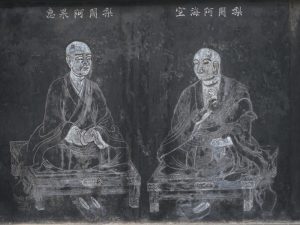
This temple was a training place for Buddhist monks including Japanese monks during the Tang Dynasty. Kukai (774-835) who studied here under the tutelage of Huiguo, returned to Japan in 806 to found the Shingon sect of Buddhism in Japan. This temple therefore has a significant impact on Japanese religion
The original temple was destroyed and a new one was built in 1963. Ruins of the temple are marked in the expansive temple ground which is now a garden. During the Tang Dynasty, this temple located on a hill had attracted famous poets to come here to retreat. I saw calligraphy and paintings engraved on rock.
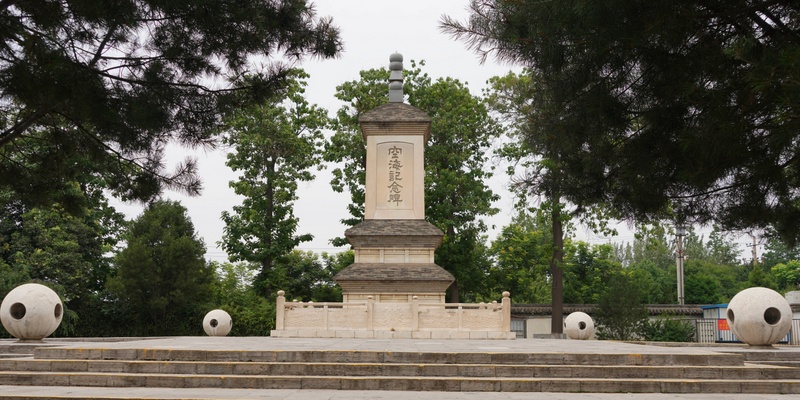 The temple has three sections. The first section has a pond and garden with plum and cherry trees. The cherry trees donated by the Japanese, have added a Japanese touch to the temple ground.
The temple has three sections. The first section has a pond and garden with plum and cherry trees. The cherry trees donated by the Japanese, have added a Japanese touch to the temple ground.
The eastern section has a memorial to Kukai built in 1982 to commemorate the 1178th anniversary of Kukai’s arrival in China.
To the west of the garden is a replica of the temple’s main hall which was constructed in 1984 as a collaboration between Japan’s Shingon Sect and the city of Xi’an. This is now an exhibition hall on Kukai with some remaining Tang-era monuments.
The temple is small and insignificant as compared with many famous temples in Xi’an. But since I have come across Kukai on my first trip to Shikoku, I somehow feel bonded with him and this temple is significance. I hope to complete the 88-temple pilgrimage route this year if possible.
Daxingshan Temple 大兴善寺
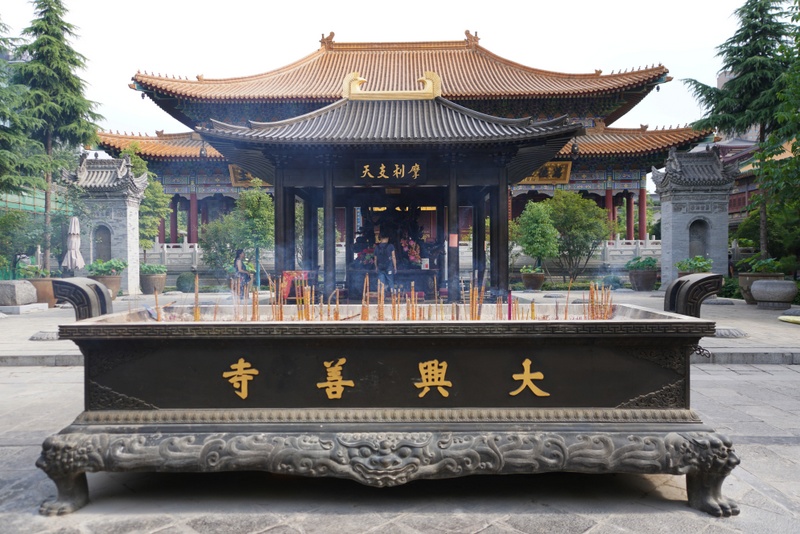 uilt in 288 during the Western Jin Dynasty (265-420), the temple reached unprecedented heyday in the Tang Dynasty (618-907) when Subhakarashimha, Vajrabodhi and Amoghavajira taught Chinese Esoteric Buddhism here. Japanese monks Ennin and Enchin introduce it to Japan. Daxingshan temple, Daci’en Temple and Jianfu Temple 荐福寺became the three sutras translation sites in the Tang Dynasty.
uilt in 288 during the Western Jin Dynasty (265-420), the temple reached unprecedented heyday in the Tang Dynasty (618-907) when Subhakarashimha, Vajrabodhi and Amoghavajira taught Chinese Esoteric Buddhism here. Japanese monks Ennin and Enchin introduce it to Japan. Daxingshan temple, Daci’en Temple and Jianfu Temple 荐福寺became the three sutras translation sites in the Tang Dynasty.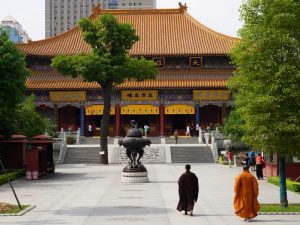
The temple was completely damaged in the Great Anti-Buddhist Persecution after the fall of the Tang Dynasty. Most of the present structures were repaired or built in the Ming Dynasty (1368-1644) and modern day.
The temple not far from the Bell Tower is majestic. Along the central axis stand the Shanmen, Four Heavenly Kings Hall, Mahavira Hall, Guanyin Hall, Meditation Hall and Dharma Hall. I like the quiet temple ground which has some old trees and d was quiet and peaceful.
It was a hot day. When the temple closed at 5 pm, I decided to take a bus to the hotel. I asked the tour desk to book a performance at the Shannxi Grand opera House at 7:30pm. I paid RMB240 for a seat and transfer. Not bad.
The show lasted an hour. The hall was almost full with 400-500 tourists both local and overseas. It was a variety show with six dances and four pieces of music performances. The performers were dressed in extravagant Tang costumes. The dancers were good. Some pieces of music were beautifully performed with instruments of the time. But the sound engineers did not adjust the volume, I found the music of some pieces unbearably loud. The English translation also has room for improvements.
I was back in the hotel before 9 pm. I must be tired and had an early night.



